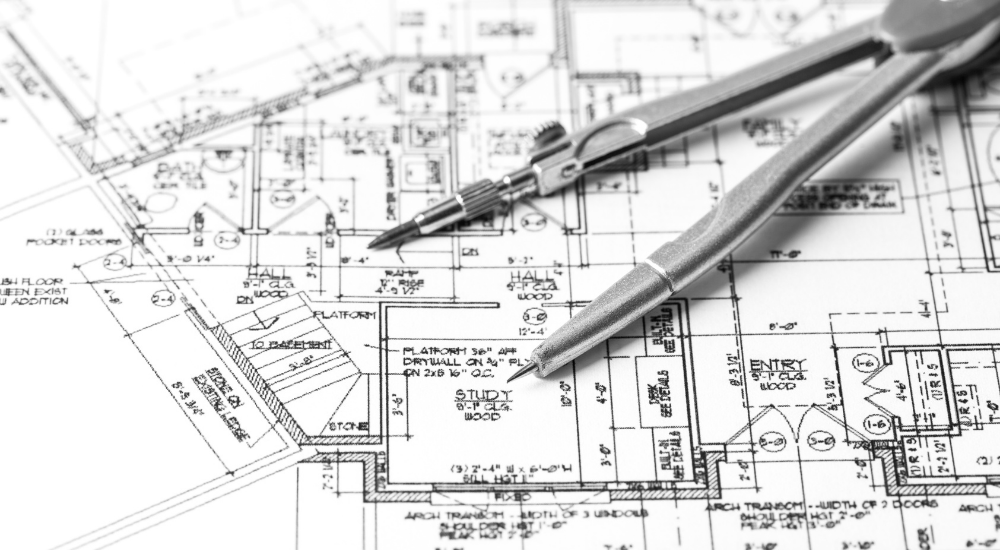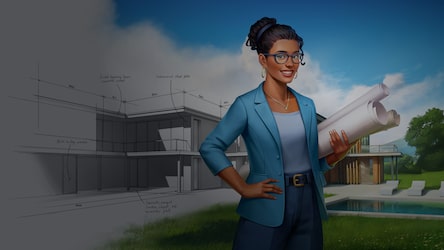Architect Hiring Guide for Clients and Investors
Architect Hiring Guide for Clients and Investors
Blog Article
Understanding the Diverse Occupation Paths Available for Aspiring Architect
As a hopeful Architect, you have a world of profession courses waiting for you. Whether you're drawn to standard architecture or the subtleties of lasting style, there's a particular niche that lines up with your interests.
Standard Style: Creating Buildings and Structures
Standard design focuses on designing structures and structures that mix capability with visual charm. Your styles can reflect cultural heritage, showcasing local practices while meeting contemporary needs.
You'll establish skills in composing, model-making, and site evaluation, permitting you to imagine and connect your ideas properly. Involving with clients, you'll require to understand their vision and equate it right into practical styles.
Additionally, building codes and sustainability methods are important in your job, guaranteeing your structures are eco friendly and safe. As you expand in your profession, you'll locate chances in domestic, commercial, and even remediation projects, each offering one-of-a-kind obstacles. Welcoming traditional architecture paves the way for a fulfilling occupation that admires the past while forming the future.
Urban Planning: Forming Communities and Public Spaces
As an aspiring Architect, you can play an important function as an urban planner, transforming how communities work and engage. By employing community interaction approaches, you'll ensure that homeowners have a voice in forming their setting. Plus, incorporating lasting style principles will certainly aid develop spaces that not just meet today's needs but additionally secure the future.
Role of Urban Planners
While several could consider architects as the single dreamers behind structures, urban coordinators play an essential duty in shaping the more comprehensive landscape of areas and public areas. They examine land use, zoning legislations, and area needs to produce lasting environments that improve lifestyle. By collaborating with different stakeholders, you'll aid design parks, transportation systems, and household areas that promote social communication and ease of access. Urban organizers also focus on ecological considerations, making certain that developments incorporate eco-friendly areas and support biodiversity. Your knowledge in spatial layout and community dynamics allows you to visualize future growth while maintaining cultural heritage. In this critical function, you'll straight affect just how individuals experience their environments, making every project an opportunity for positive modification.
Community Interaction Methods
Reliable community engagement techniques are important for metropolitan coordinators to ensure that the voices of locals are heard and valued in the planning process. To foster meaningful discussion, you must prioritize open online forums and workshops where neighborhood participants can reveal their ideas and concerns. By proactively paying attention and including feedback, you'll produce rooms that reflect the area's demands, ultimately leading to more lasting and effective urban atmospheres.
Lasting Layout Concepts
When designing city spaces, including sustainable layout concepts is important for creating settings that grow both ecologically and socially. Think about integrating green areas, like parks and gardens, to enhance biodiversity and improve air top quality.
Creating with water preservation in mind is also essential-- think of rainfall yards and absorptive surface areas to manage stormwater. Entailing area participants throughout the preparation process guarantees that the spaces you produce fulfill their demands and motivate social interaction. By accepting these principles, you'll add to vibrant, sustainable city landscapes that profit every person.

Landscape Architecture: Creating Sustainable Outside Environments
As you explore landscape architecture, you'll find important style principles that create useful and lovely outside spaces. Lasting methods play an important duty in ensuring these settings prosper while reducing ecological effect. Plus, you'll locate a range of career possibilities that allow you to make a real distinction in how individuals communicate with nature.
Design Concepts in Landscape
Understanding style principles in landscape style is important for producing lasting outdoor atmospheres that integrate with nature. You'll require to contemplate components like equilibrium, range, and percentage to ensure your layouts really feel natural and inviting. In addition, pay focus to seasonal adjustments, making with products that enhance the surroundings year-round.
Sustainable Practices Overview
Lasting practices in landscape style not only focus on looks but likewise focus on environmental wellness and resource preservation. You can design areas that advertise soil wellness, such as exercising and making use of organic materials permaculture concepts. Eventually, these techniques assure your designs benefit both people and the atmosphere for years to come.
Career Opportunities Expedition
With a strong structure in lasting techniques, landscape style provides a variety of job courses that permit you to make a meaningful effect on the atmosphere. You might function as a landscape designer, producing cosmetically pleasing and useful exterior rooms, or focus on environmental restoration, helping to revitalize damaged ecological communities. Urban coordinators typically team up with landscape architects to develop environment-friendly rooms in city setups, boosting city livability. If you're enthusiastic about education, consider becoming a landscape style instructor, motivating future generations. Additionally, you might collaborate with nonprofits concentrated on ecological sustainability or involve in research study to innovate new practices. Each path not just forms beautiful environments but additionally cultivates a much healthier world for future generations.
Lasting Style: Focusing on Eco-Friendly Practices
As you discover your profession in style, embracing eco-friendly methods can establish you apart in an affordable field. Lasting style focuses on developing buildings that lessen environmental effect while enhancing owner wellness. By including renewable products, energy-efficient systems, and sustainable building strategies, you'll add to a greener future.
Begin by gaining understanding of green accreditations like LEED or BREEAM, which can get more info bolster your qualifications. Take into consideration exactly how all-natural light, air flow, and thermal efficiency can enhance design. Work together with designers and ecological specialists to introduce remedies that reduce waste and save sources.
Do not forget the value of area participation-- interesting local stakeholders can influence styles that integrate with the setting. As clients progressively focus on sustainability, your expertise in environmentally friendly techniques will certainly not just bring in projects however likewise meet your interest for liable architecture. Embrace this vital facet of the career, and see your career flourish.
Historical Preservation: Safeguarding and Bring Back Cultural Heritage
While you begin on your architectural journey, consider the vital function of historical preservation in preserving our cultural heritage. This field concentrates on the security and repair of substantial structures, sites, and structures that tell the tales of our past. By taking part in historical conservation, you'll assist protect the architectural tradition that shapes community identification.
As a historic preservation Architect, you'll examine historical significance and analyze the condition of structures. You'll work closely with guardians and chroniclers to ensure genuine reconstruction methods are employed. This job path permits you to blend imagination with research study, allowing you to create services that value original products and craftsmanship.
Your job not only adds to sustainability by reusing existing structures but additionally cultivates a feeling of pride within neighborhoods. Embracing this course will certainly assist you become a guardian of background, preserving the tales and looks that enrich our lives.
Inside Architecture: Enhancing Indoor Spaces
Historic preservation and interior architecture both share a dedication to improving the built environment, yet they concentrate on various facets. While historic preservation stresses maintaining a structure's social and historic worth, interior style absolutely nos in on optimizing interior rooms for functionality and appearances.
As an aspiring Architect, you'll locate that indoor architecture enables you to mix creativity with technical abilities. You'll make spaces that not only look great however also advertise convenience and performance. This area involves understanding exactly how light, shade, and materials communicate within a space, affecting mood and use.
You'll work with different jobs, from property homes to business workplaces, making certain that each atmosphere satisfies the requirements of its passengers. By focusing on individual experience, you can transform interiors right into inspiring and functional rooms, making a significant influence on exactly how individuals engage with their environments. Accept the chance to enhance indoor check here atmospheres and form the method people work and live.
Industrial Design: Combining Performance With Aesthetics
Commercial layout plays an essential duty in developing products that flawlessly mix appearances with capability, making sure that what you utilize daily is not just visually attractive but also sensible. As an ambitious Architect, you might immerse yourself in this field, focusing on developing every little thing from furnishings to customer electronics. Your job includes understanding user demands, materials, and making procedures, allowing you to develop ingenious services that boost daily experiences.
In commercial design, you'll commonly collaborate with engineers, marketers, and producers, ensuring that your designs are not only lovely but additionally feasible. This profession course supplies a dynamic environment where creative thinking fulfills functionality, making it a satisfying selection for architects interested in forming the items of tomorrow.
Often Asked Inquiries
What Educational Certifications Do I Required to End Up Being a Designer?
To become an architect, you'll require an expert level in style, generally a Bachelor's or Master's. Furthermore, you'll have to finish an internship and pass the Architect Enrollment Assessment to practice legally.
Exist Accreditation Requirements for Various Architectural Career Paths?
Yes, there're qualification demands for various building paths. Architect. You'll need to pass tests, total internships, and occasionally seek specialized training, depending upon your selected emphasis, like landscape architecture, city layout, or historic preservation
What Software Abilities Are Vital for Designers Today?

Exactly How Can I Gain Practical Experience While Examining Architecture?
You can gain practical experience by interning at architectural companies, taking part in style competitions, offering for area jobs, or working together with classmates on real-world jobs. These chances enhance your abilities and construct useful connections in the industry.
What Job Opportunities Exist Outside Typical Design Firms?
You can explore numerous work chances outside conventional architecture companies, like more info city planning, interior decoration, landscape design, building management, actual estate advancement, or even roles in sustainability consulting. Each offers one-of-a-kind obstacles and benefits.
Whether you're drawn to traditional style or the nuances of lasting design, there's a particular niche that aligns with your passions.When creating city rooms, integrating lasting style principles is essential for developing atmospheres that grow both ecologically and socially.As you explore landscape design, you'll uncover essential design principles that develop practical and attractive outdoor areas.Recognizing layout concepts in landscape architecture is necessary for developing sustainable outside environments that balance with nature.In commercial layout, you'll frequently team up with marketing professionals, designers, and producers, making sure that your designs are not just lovely yet likewise practical.
Report this page